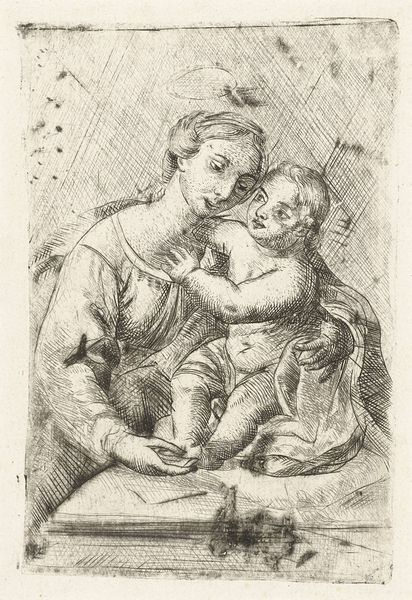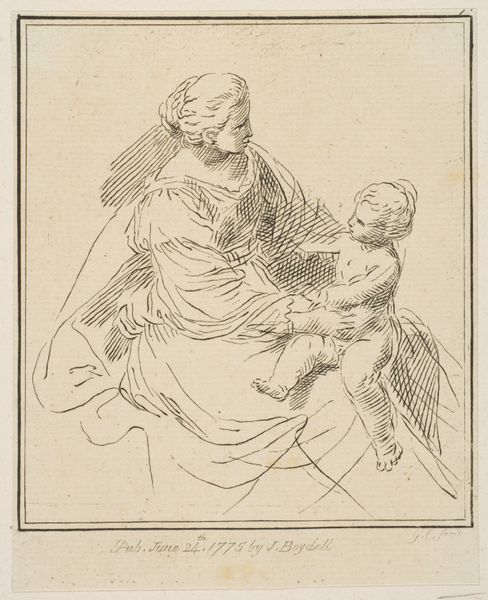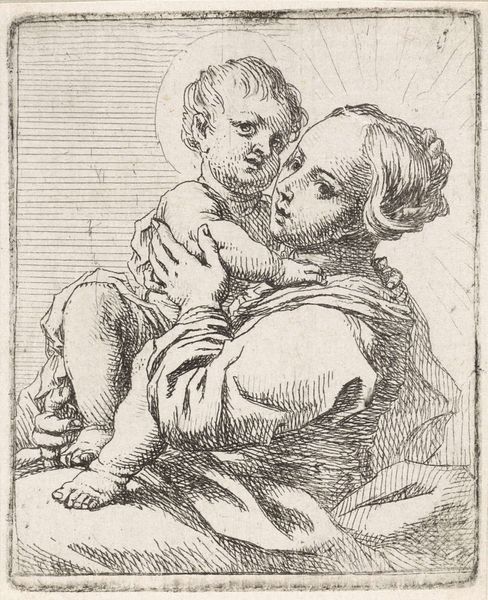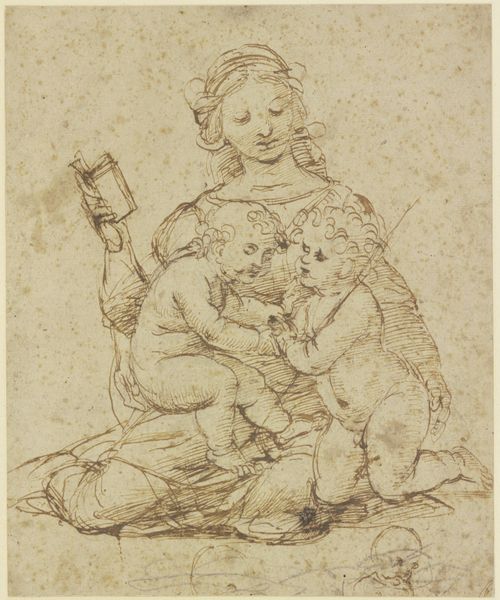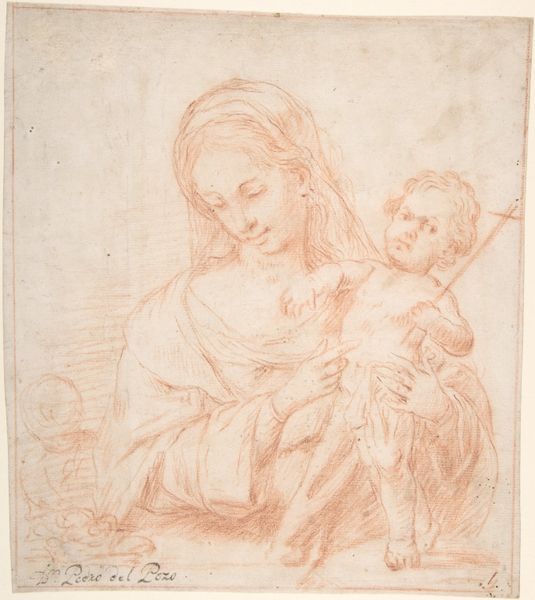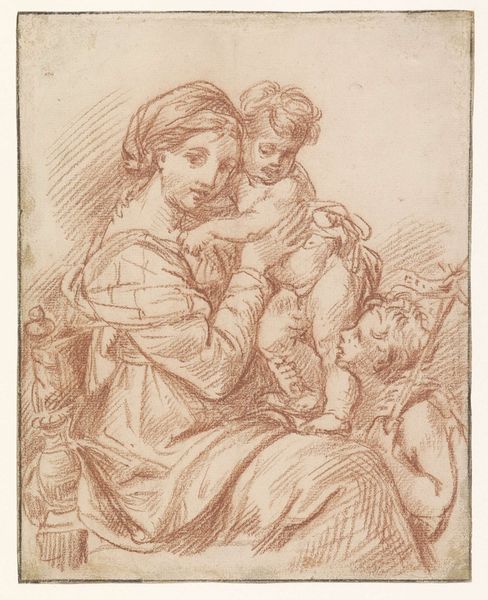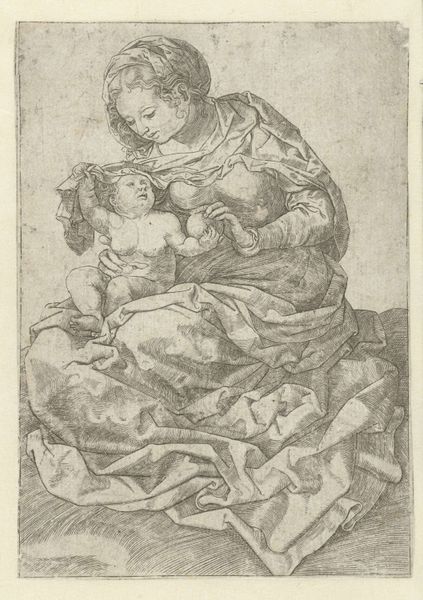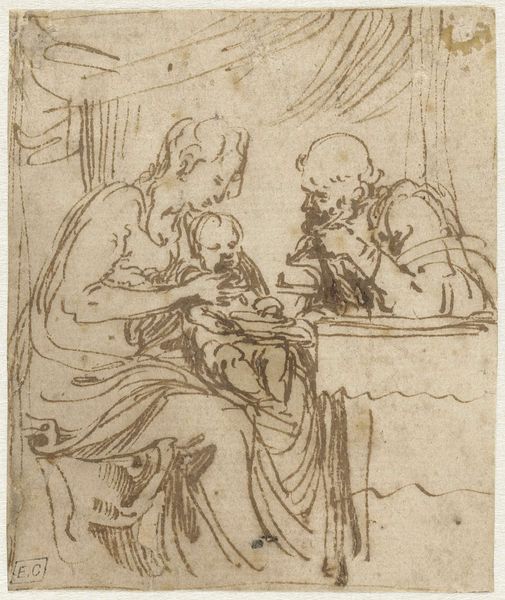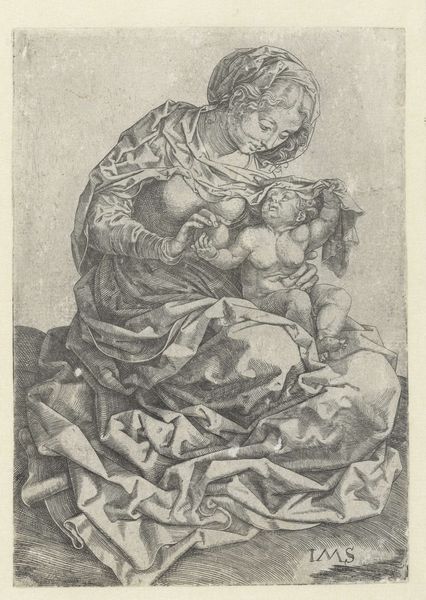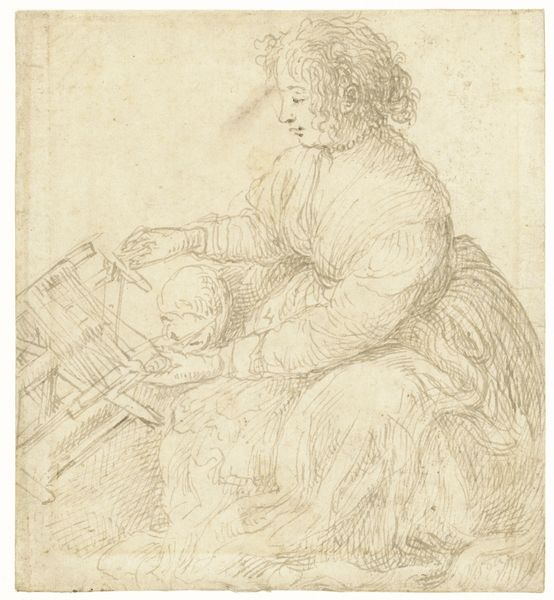
drawing, print, paper, ink
#
portrait
#
drawing
#
ink drawing
# print
#
paper
#
madonna
#
ink
#
child
#
history-painting
#
italian-renaissance
Dimensions: 8-3/8 x 6-7/8 in. (21.2 x 17.4 cm)
Copyright: Public Domain
Editor: This ink drawing, "Madonna and Child," dating from around 1600 to 1700 and housed in the Metropolitan Museum of Art, really strikes me with its delicate lines despite the heavy subject matter. It almost feels unfinished. How do you interpret this work from a visual and technical standpoint? Curator: Note the strategic use of hatching and cross-hatching to define form and create tonal variation. The artist masterfully uses line weight to suggest depth, observing that darker, thicker lines advance while lighter, thinner lines recede. Editor: The composition also feels rather straightforward. Is there a particular element that dictates how we read the image? Curator: Consider how the artist uses the bounding lines, not merely as an enclosure, but as an integral component. It constrains and focuses the viewer’s eye. Moreover, observe the texture implied by the repetitive strokes. How does this pattern influence the overall perception of the artwork? Editor: It flattens the image and highlights the two-dimensionality. Would you say this enhances its graphic quality rather than representing a realistic depiction? Curator: Precisely. The linear quality dominates over naturalistic representation, directing the attention to the formal qualities of the piece. It's less about evoking emotion, and more about experiencing how lines define the relationship between forms within a bounded space. Editor: So, by focusing on the line work and composition, we’re able to appreciate the drawing on its own terms, apart from its subject matter? Curator: Exactly. It is through this critical assessment of elements such as line, texture and form that we begin to unlock a visual understanding of the artwork and appreciate the artistic intentions behind its creation. Editor: That's given me a lot to consider about how to approach looking at art from now on. Curator: Likewise. This exercise reinforces the significance of methodical observation.
Comments
No comments
Be the first to comment and join the conversation on the ultimate creative platform.
